The year is 1996, Mwalimu Julius Nyerere comes to Kigali and demands to see Laurent Desire Kabila. Mwalimu had introduced Kabila to Paul Kagame and Kaguta Museveni. Kabila was a one-time warlord of the Mobutu era, who lived off of contraband at the border between Zaire and Tanzania.
Kabila lives at a hotel in Goma. “Take me there”, Mwalimu says. He is given a senior officer of the Rwandan army to accompany him. They reach Goma, he says: “Ebu, kwenda niitie Kabila.” It is drizzling outside, Kabila shows up, the Mwalimu lowers his window and says:
- “Kabila!”
- “Ndiyo Mwalimu”,
- “Nimefanya safari ndefu, ili nije ku kwambia maneno mawili.”
- “Ndiyo Mwalimu”
- “Mulipo komboa inchi, mambo ya ukabila, na mambo ya rushwa, sitaki kusikiya!”
- “Ndiyo Mwalimu”
- “Sawa. Nawatakiya ushindi”, Mwalimu concludes as he raises his window and tells the driver to depart.
The meeting lasted five minutes at most, and the Mwalimu never disembarked his car.
Soon after, Kabila would be installed in power in Kinshasa, and proceed to do the exact opposite of what Mwalimu had cautioned him about. He resorted to looting and fell off with his hitherto allies, Rwanda and Uganda who had literally carried him and installed him in power in Kinshasa. He then called for a witch-hunt on Tutsi in big cities, namely Kinshasa and Lubumbashi. Many would be killed, and others detained for several months, then deported to Rwanda. As for Kabila, he would be assassinated shortly after, by one of his aides…
Before they departed from us, no men best explained the Tutsi question than the Late Mwalimu Julius Nyerere and Late Comrade Nelson Mandela. I believe they were men of God, who, as if by premonition, foresaw how their successors, driven by hubris and greed, would betray, respectively, CCM’s standing as the historical supporter of African struggles for self-determination, and the ANC’s legacy as a freedom fighting movement.
In a famous lecture, speaking at a roundtable organized by the International Peace Academy, in New York, Mwalimu reflects: “When we were creating this Organization of National Unity, we established the principle of inviolability of borders, as drawn by colonialists. African borders are very artificial and do not make sense. They were drawn with a ruler by the colonialists. Our aim then, was to protect the newly independent States from endless civil wars. Unfortunately, we didn’t insist enough on the protection of the people within those states.”
He pursues: “Although we have respected that principle, we have paid scant regard to the plight of our own people. It is no use respecting those borders, without respecting the people who live in them.”
He recalls: “In June 1994, while the genocide against the Tutsi was taking place in Rwanda, I went to Addis-Ababa, at the headquarters of the OAU to receive Nelson Mandela, who was taking his seat for the first time as President of liberated South Africa. It was a great day for Africa, but it was also a shameful day for Africa because we received in the same room the killers from Rwanda.
But what could we do? The world watched on television as Tutsi were being killed and did nothing. We Africans too watched, but did nothing at the time, because the principle of non-interference prevailed. But Africa is changing.”
Mwalimu pursues: “The Kingdom of Rwanda was partitioned between the Germans and the Belgians, and each took part of the people. So when we say, respect the border, we must also be saying, respect the people whom you received with the partition. If you want to return the people, you must return their piece of land!”
And to bring context as a true Mwalimu (teacher): “We couldn’t say to the Masai of Tanzania, go home to Kenya. Home where? These are Masai from Tanzania, they have never been to Kenya, they have always been Tanzanians. My friend Kenyatta, [Jomo Kenyatta, President of Kenya at the time] can’t tell the Maisai of Kenya to go home to Tanzania. They are Kenyan Masais…”
Indeed, Masai are undeterred wherever they go in our region! Even in Kigali where light weapons and hawking are prohibited, Masai are tolerated to walk around with their swords, selling flip-flops, belts, wallets, and other leather items. Aren’t they, after all, the owners of all cattle that walk the earth? [their version].
Here is Mwalimu’s edifying lecture.
Historically, the Zairian army has been some sort of “Ustashi”, that Croatian militia which fought alongside the Nazis in WW2. When the Rwandan Patriotic Front took up arms against the Rwandan regime, to compel Rwanda’s president Habyarimana to allow the peaceful return of Rwandan Tutsi scattered in the region, Mobutu Sese Seko, then Zairian president readily dispatched his army to support Habyarimana. Rwanda’s president also enjoyed strong support from France. The military and geopolitical support emboldened Habyarimana to reject a peaceful resolution of the conflict, as demanded by the RPF and Mwalimu Nyerere and instead made pompous warlike statements, much like those being made by Felix Tshisekedi today. It also gave him time to prepare and implement the Genocide against the Tutsi.
After Paul Kagame and the RPF put an end to the Genocide, Mobutu harbored all the killers in his big Zaire. He reorganised them, armed them, and placed them right at the border with Rwanda from where they would carry-out incursions into Rwanda and kill genocide survivors. In addition, they started killing Zairian Tutsi, assimilating them to Rwandans. Nelson Mandela refused this, he armed Paul Kagame and supported him in invading Zaire, push the killers far away from Rwandan borders and eventually topple to old Zairean dictator Mobutu Wazabanga. Here is Mandela explaining his historic decision.
Mandela’s decision, would later be buttressed by Late Antoine Tshisekedi Snr., father of the current DRC President Felix Tshisekedi Jr. in this edifying interview.
In Mwalimu, Mwinyi and Mkapa’s time, just like during Madiba and Mbeki’s era, Tanzania and South Africa were always on the right side of History. They supported just causes and spoke the truth. In fact, a recent interview with former South African President Thabo Mbeki on the situation in DRC, shows that Mandela’s immediate successor was the last frontier of reason, in post-Apartheid leadership…
That changed in 2013 with the advent of corrupt leaders whom, like Zaire’s Mobutu, prioritised personal gain over African people’s liberation…
Tanzania and South Africa’s historical position:
Mwalimu was a Visionary leader, a true Pan-African who supported most struggles of liberation, and mentored many post-independence leaders in Dar-Es-Salaam. His greatest achievement, however, what Tanzanians fondly remember him for, was to fight tribalism and build a strong national identity. Tanzania has remained the most peaceful country in Africa!
Mwalimu hosted and generously offered his good offices to peace talks, whenever he was called upon. So was Madiba. Songs were written in Kinyarwanda praising Arusha, the Tanzanian town on the feet of Kilimanjaro, which hosted Rwanda’s peace talks of the 90s, as the hope of a peaceful return of the Tutsi diaspora to Rwanda after 30 years in exile.
Imagine my bewilderment in 2013, long after Mwalimu and Madiba had rested, whence I saw Tanzania and South Africa, coming into DRC, guns blazing, to prevent the Congolese Tutsi from returning home. Had they come in, offering a peaceful avenue, it would have appeared consistent with the philosophy of their founding fathers. But they didn’t.
Ironically, the Son never listened to his Father, the Wanafunzi [mentees] learned nothing from the “Mwalimu” [the Master], nor did the South African comrades, borrow a leaf from the “Madiba”: “Xhosa” for a fondly respected father of the nation.
A Rwandan elder once said: “It is all written. Sadly people are too distracted to meditate on the meaning of words”. One was called “Mwalimu”, another, “Madiba”. Respectively: “Teacher” and “Visionary”, another again was the current President’s own father, a historical figure of the Congolese opposition, whose name, Jr. used to access power. They did their job; they taught their students, but indeed you can bring a donkey to the river, but you cannot force it to drink…
There is a reason they kept explaining the cause of Tutsi to the world. Although they were globally respected, there is a reason they were humble. Although their respective countries had strong armies, there is a reason they refrained from saber-rattling. They died poor men, but their legacies will remain forever.
M23 soldiers are fighting for the rights of their people to have a home, a citizenship. In this case, they are fighting like the uMkhonto we Sizwe or the RPF-Inkotanyi of the early nineties. They are fighting like the FRELIMO of Samora Machel, the MPLA of Agustino Neto, or the PAIGC of Amílcar Cabral. As history has shown, people fighting for their right to live cannot be defeated, for their war is just.
Burundian, South African, and Tanzanian soldiers, on the other hand, are fighting alongside genocide perpetrators, paid mercenaries from Eastern Europe, and hundreds of violent militias. They are doing this, because a handful of their politicians were bribed by Felix Tshisekedi, the president of an oppressive regime that discriminates parts of its citizens, the Tutsi; much like the past regimes of Habyarimana and F.W. de Klerk…
The Rwandan Question:
For historical context: Congolese Tutsi are like the “Rohingya” of Burma; that Muslim community which the Myanmar Buddhist government has rejected because they are assimilated to Bangladesh. There are about 40 million people of Rwandan origin in this region. The majority of them live in Uganda. They are accepted as Ugandans. Others are Tanzanians, others, Burundians; there are even Rwandans found in Kenya. Only those found within the Rwandan boundaries, as drawn by colonialists, upon independence on July 1st, 1962, are of Rwandan nationality. We are 13 million to date. Others remained in their ancestral land in their newly formed countries.
When the genocide against the Tutsi was stopped by Paul Kagame’s army, the killers fled to Zaire where they were welcomed by their hitherto ally Mobutu Sese Seko. However, they were not disarmed or placed at 150 kilometers from the Rwandan border as stipulated by international law. So they continued with their genocidal agenda, this time targeting the Tutsi that they found there. Zaire did not protect its Tutsi citizens, instead, it supported the killers to carry out nightly incursions into Rwanda and kill Tutsi survivors. So the Tutsi community fled Eastern DRC into Rwanda, Uganda, and across the region.
That is why Rwanda and Uganda invaded Zaire in 1996 toppled Mobutu and installed Laurent Kabila, who readily changed his country’s name to the “Democratic Republic of Congo” (DRC). However, the fallout with Kabila Sr., and the orchestrated witch-hunt of Tutsi in DRC, thwarted the return of refugees. There are half a million Congolese Tutsi who have spent the last 28 years in refugee camps across the region and in the West.
Rwandan interventions have always been about bringing peace to oppressed societies. All spins about its action, peddled by its enemies and their allies, have been debunked by internationally respected institutions and figures including Late Nelson Rolihlahla Mandela and Late Julius Kambarage Nyerere.
Remarkably, the Mozambican government is asking the SADC troops to leave Cabo Delgado and be replaced by the Rwandan army, after they have failed, for half a decade, to dislodge the Islamist insurgents. It took Rwanda, a country from East Africa to bring peace to their backyard.
I am no prophet, but I am a student of history. And as such, I see eastern DRC as a possible Waterloo for two historical, once-respected liberation movements, namely the African National Congress (ANC) and the Chama Cha Mapinduzi (CCM). In war, anything is possible. If tomorrow M-23 parades Tanzanian and South African soldiers captured on the battlefield, or, God forbid, in body bags, the politicians of those countries will have a lot of explaining to do to their families and to the citizens, who are clueless about the unjust wars that their corrupt leaders are leading them into.
Also, armies should entertain a certain myth about their true strength. The illusion of military might is as good a deterrent as is actual might. Burundians have exposed their army to ridicule and humiliation in the last couple of weeks when captured soldiers were forced by M23 to sing the Burundian national anthem and confess before cameras that they do not know why they were sent to die in Eastern Congo.
Our last recollection of the Tanzanian infantry dates back to the Kagera War of 1978-1979 against Uganda. While the Tanzanian army emerged victorious and has since maintained a good reputation, it is safe to say that water has flowed under the bridge…
Barack Obama’s phone call of 2013:
Although the media and national propaganda portrayed it as a defeat, the Intervention Brigade made of Malawian, Tanzanian, and South African armies did not defeat M23 in 2013. Barack Obama, then US President picked up the telephone and asked President Kagame and President Museveni, the two heads of state who host relatives of M23 fighters, to ask the rebel movement to lay down arms, with a promise, at the time, that the DRC government had agreed to peace talks that would see their exiled families return home to DRC.
Ten years later, the Tutsi community from DRC is still languishing in refugee camps. Obama is no longer America’s president, and even if he was, he wouldn’t find the words to tell Kagame and Museveni, since the DRC later rescinded its promises. This time, I think the boys of M23 will fight. I know this, because they told me exactly as much, in person, when I went to conduct research in Rutshuru, towards to end of 2022.
When they revived their armed struggle two years ago, M23 expected the Tanzanian and South African armies to eventually deploy in Eastern Congo, in fact, they even expected Rwanda and Uganda to put pressure on them to lay down arms at some point. “Ariko ubu ntibizaba. Ntituzahunga. Tuzapfira iwacu.”, they told me in Kinyarwanda – our joint mother tongue – and the source of regional confusion. [It won’t happen this time. We will not withdraw. We will fight and die here.]
SADC’s air superiority cannot capture territory:
SANDF and TPDF’s air force and artillery superiority over M23 is undeniable! However, Air Force doesn’t capture territory nor does artillery win wars, especially in mountainous terrain. They only destroy civilian life. That’s why Americans abandoned Afghanistan to the Taliban after twenty years of relentless bombing and drones hovering over those Afghani mountains.
What people do not know is that Sultani Makenga, leader of M23, did not stay long in the safehouse that was rented to him by the Ugandan government, following M23’s withdrawal in 2013. The man, who has been shot in the leg, took about ten of his closest soldiers and returned to the forests of Cyanzu and Runyoni in Rutshuru. All three armies, namely the Rwandan, Ugandan, and DRC armies knew he was there and talked to each other. He hibernated in the dense forest for nine or so years with ten men, no food supplies, with – I believe – only one pistol: his, and a few cow herders’ sticks, living off hunting wild rabbits and foraging bananas in village plantations.
His position was in a valley sandwiched between three volcanoes, separating the three countries. All three armies used to watch him emerge from his bunker in the morning, salute his ten guys in “Fall-in” [Rwandans will read ‘foren’], then distribute orders: – “You go fetch water, you, firewood, you go ‘recce’ (short for reconnaissance) the enemy’s position, etc.”, they would radio each other and laugh about it… That was until he felt the time had come and attacked the nearest military camp. As it turns out, they were watching him, but he was watching them too…
That is the man that armies from the Kalahari Desert in Southern Africa and from mostly semi-arid Tanzania, want to engage in guerrilla warfare in the thick bushes of the gorilla mountains…
Two of the three DRC drones have been destroyed. Nine more have been ordered from China. From what I have gathered, drones are ordered in packs of three, with one small container that serves as a control room. In the room, there are two guys: a signaler, and a shooter. Outside, there is a team of weapon loaders. There also needs to be flight maintenance crews on-site, for after every few flights the drones must be serviced. Save for the handymen loading bombs, the rest of the drone teams are foreign contractors. These types of contractors aren’t easy to find because they’ve got to be highly trained fighter pilots and drone engineers.
Drones are the most lethal weapons in this war. However, it seems that M23 has learned how to hack them and tell their trajectory. Since M23 downed the two, the third one hasn’t been flying much. Imagine if the drones were actual aircraft manned by South African or Tanzanian pilots. How would SANDF or TPDF high command react to two of their elite fighter pilots being killed in DRC?
Dense forests provide incredible cover to infantry. You can wake up one morning and find the enemy has advanced on you while you slept. To prevent this, my uncle, a veteran of the RPA 90’s campaign, told me that his job was ‘night patrol’, a suicide mission for the supremacy of the buffer separating two warring armies. “in one night, you might fall into ten ambushes. But I was used to it, that was my job!”, he tells me with a smile… This means, M23 can sneak in on the SANDF and TPDF positions under the cover of the night, as it does the Congolese army FARDC.
“Indaki”, trenches are resistant to bombing. SADC armies might shell an area from morning to evening, and the impact on the enemy would be minimal. They have to go in mano a mano with M23 to be able to dislodge them and reconquer any territory. But that becomes messy when they have to coordinate with the hundred-plus unruly, machetes-wielding, noise-making thugs named Wazalendo. South Africans have released a communiqué asking the Congolese Army to distance itself from the Wazalendo militias and FDLR. But no one has control over those militias.
In the words of President Tshisekedi, the Congolese army likes to be accompanied in combat by ‘coaches’: Eastern Europe mercenaries who help them operate heavy weaponry, collect intelligence and prepare attacks. Right now the coaches are on strike because they haven’t received their payment in four months.
As I write, the Chinese or Rumanian drone operators are sitting in their control room at Kavumu airport in Bukavu, South Kivu, at the border with Rwanda and Burundi. The nine new drones ordered will require at least six more operators, trained in dense forest terrains. What would happen if M23 started targeting those control rooms, killing “the enemy’s center of gravity”?
A Confined Zone:
Like Afghanistan, DRC is known geopolitically as a “confined zone”: an amalgam of heteroclitic tribes put together at the Berlin conference of 1884 to 1885, to form the private property of King Leopold of Belgians: In other words, you have to conquer one hill after another. Every hill has its own village chief and militia, who don’t necessarily see eye to eye with those on the next hill. You can occupy the cities of Goma or Bukavu; that means nothing at all strategically! In fact, that is a burden for an ill-equipped rebel movement, to administer civilians in a big town.
Now the rudimentary army of horse-ridding, cave-dwelling Pashtuns from Afghanistan defeated the mighty British army between 1838 and 1842 (4 years), the Soviet’s Red Army between 1979-1989 (10 years), and the US Marines between 2001 and 2021 (20 years).
Each of these mighty armies had quickly taken Kabul, the capital city. But they were losing so many men that, at some point, they couldn’t even leave their compounds…
In the end, the British lost 4.500 people, which was significant in the context of 19th-century wars; the Soviets lost 15.000 troops and the Americans, 2,402 marines. Here I am not talking about civilian casualties.
The question then arises, how many men is South Africa or Tanzania ready to sacrifice in Eastern Congo? Namibia didn’t deploy in DRC as part of the SADC force this time, precisely because they lost many soldiers in 2011.
Betraying our forefathers’ legacy:
Whereas Madiba and Nyerere supported peoples’ self-determination: Biafra, RPF, NRM, MPLA, SPLA, ANC, FRELIMO, AFDL, EPRDF; their nemesis, Ramaphosa and Kikwete would have accepted payouts from Mobutu, Ian Smith, Omar-El-Bashir, Habyarimana, F.W. de Klerk and donate their respective armies to oppose Africa’s liberation movements.
How did we get here? By God! Wouldn’t it be a tragedy, if we Rwandan young people, after spending all these years living with Paul Kagame, watching him lead, being mentored by him, would revert to tribalism, to corruption, and to mediocrity after he has left?
Imagine if, for a Coltan mine in some forest or a bag of dollars, our next president would lead us to betray all the values that Paul Kagame stood for. Imagine if RDF would abandon Cabo-Delgado to Islamists, and Bangui to Anti-Balaka rebels, all for the personal enrichment of a few guys at the top. Just imagine that?!
I see a trend, across Africa, where opportunist parvenus, are undoing the philosophy and deeds of our founding fathers. Beyond the DRC conflict, this is a question that young Africans ought to discuss and address. Singapore, China, America, and Europe thrive today, not because they sing praise to their hitherto founders, but because they have preserved and abided by their wisdom.
Scapegoating Rwanda:
When M23 invaded Eastern DRC in 2022, they entered from an area called Bunagana at the border with Uganda. DRC generals and politicians readily accused Rwanda of supporting them. The UN spokesperson at the time declared to the media: “We have no proof to affirm that Rwanda is supporting M23.” The next day, he was given 24 hours to leave the DRC, then the speaker of the DRC parliament Mr. Bahati Lukwebo traveled to Goma and held a rally criticizing (MONUSCO) the UN mission in DRC. A riot ensued where mobs attacked and looted the UN premises in Goma, and demanded them to leave. The next day, MONUSCO had ‘found’ proof that the Rwandan government was indeed supporting M23.
Each year, when MONUSCO’s mandate in DRC is up for renewal, a report is published by a UN group of experts, bringing to light new ‘proof’ of Rwanda’s support to M23. Last year it was a ledger, which the experts mysteriously stumbled upon in DRC forests, bearing a list of the names of all RDF soldiers deployed to DRC…
If the SADC armies get beaten in Eastern DRC, because of their poor knowledge of the terrain and due to all the mess characterizing their allies, I fear they’ll adopt the local posture – the same used by Congolese and Burundian generals. They’ll say: “Oh no, we are two powerful armies, we didn’t lose to a ragtag rebel group, that’s not it: We lost to Rwanda, which is here to steal minerals, etc.” This pervasive line works very well in the media.
And then Tanzania will proceed to close its border with Rwanda, in total violation of a principle of customary international law: The 1982 United Nations Convention on the Law of the Sea (UNCLOS), which stipulates that countries with a seacoast may not close the border to landlocked ones.
Rwanda will not support M23 in this fight, but we sure will bear the brunt, for all Tutsi, wherever they come from, are destined to be called Rwandans. After all, to quote President Kagame: “Tutsi everywhere are being told, go to Rwanda, that is where your Tutsi president is…”


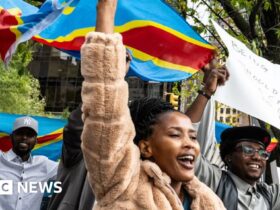
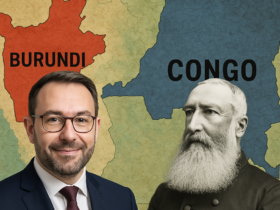
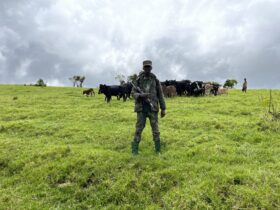


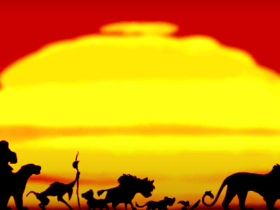


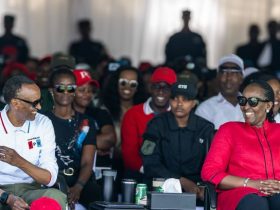
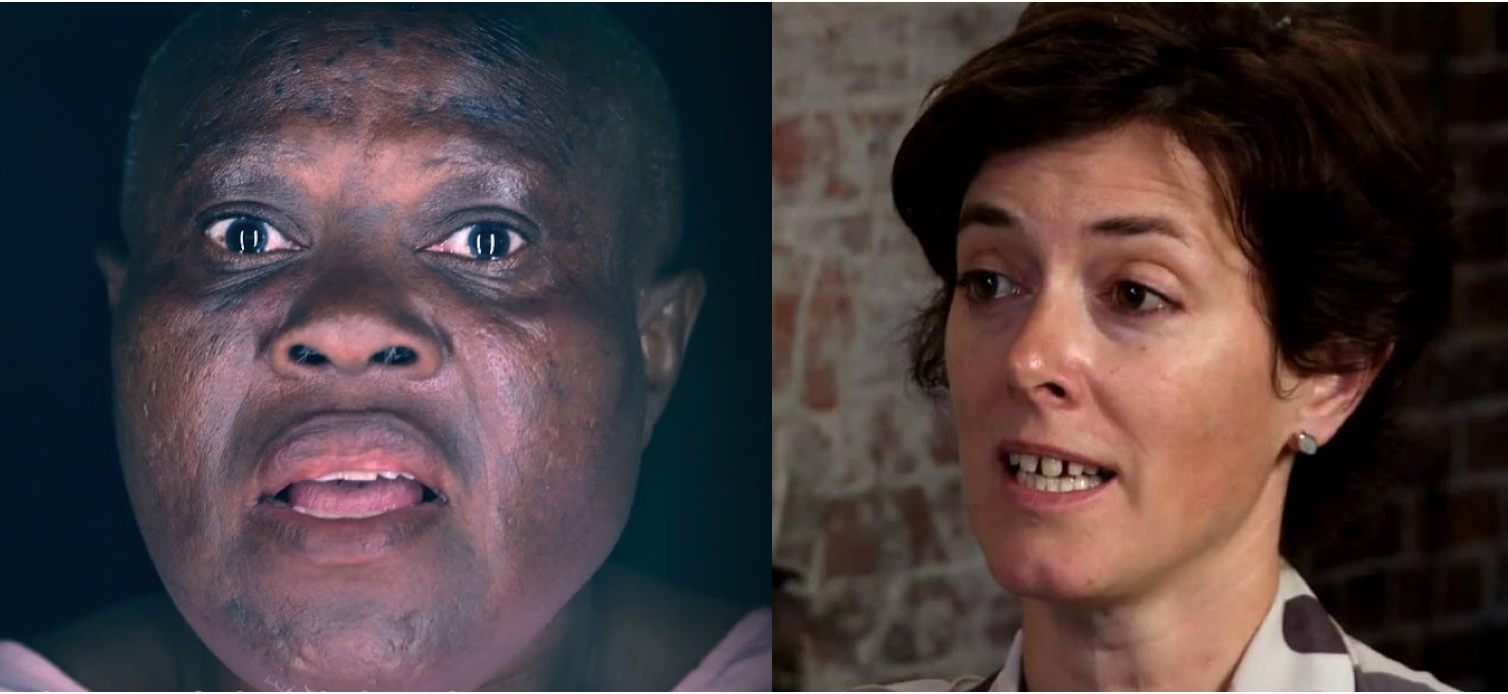


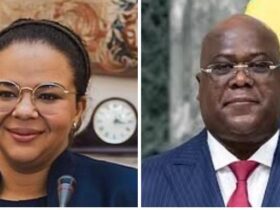
Thank you Gatete for taking us through this historical journey. How I wish all young generation could pick interest in the history of our country like you have. You should mentor young lawyers. A legacy of this country is in the hands of those who understand our past and geo politics of our region. I will always advocate for a *Governance Academy*
Thank you Gatete for this educative article! This article presents a very painful situation in a sense that people in positions of power have utterly betrayed these citizens of the DRC on top of betraying the old wise ones who gave counsel on all these matters! Peace and justice will have to prevail/win some day! We pray that the crazy situation culminates into the salvation of the Congolese that speak the Rwandan language! Thanks again!
Thank you for an eye-opening article. You shared the history and vision of our founding fathers Mwalimu Nyerere and Tata Madiba. However, I couldn’t well understood as to why it’s okay for M23 to use weapons and you are suggesting the opponents to use diplomacy. It is high time you talk to M23 (as you said that you have a close relationship with) to use diplomacy by presenting their quest to relevant organisations and push them.
They have sir, as I mentioned in the text, 12 years ago, they laid down arms, and went to refugee camps in Uganda and DRC, with the promise that the DRC government would repatriate them peacefully. They went to Kinshasa and spent a year in a hotel, waiting for Congolese officials to avail themselves for discussions on the modalities of repatriation. The DRC was just uninterested in peace talks. They only took up arms recently, a decade later because. To this day they are ready to negotiate. No conflict ends with war.
Refugee camps in Uganda and Rwanda, I mean
Un article très intéressant, c’est mieux de conserver ses sages conseils de nos leaders
Veuillez les partager aux régimes africains actuel
This is compelling,a revelation with compilation based on factual narrations well put Maitre Gatete.
Very insightful indeed! Thanks for taking us back into history @Gatete
Thank you!
Mensonge sur Mensonge. Comment faites-vous pour asseoir votre existence sur la falsification de l’histoire et le mensonge ? Les peuples d’Afrique vont se libérer, que vos parrains occidentaux ne le veuillent ou pas, des dirigeants criminels comme Kagame.
Vous n’avez rien dit. Vous avez juste crié au mensonge. D’accord. Si je ment, est-ce que Mandela ment, Thabo Mbeki ment, Nyerere ment, Tshisekedi Snr. ment? Pourquoi répétez-vous des slogans creux? Je parie que vous n’avez pas tout lu. Avez-vous la concentration de lire dix pages? Rien n’est moins sur, au regards de votre commentaire sensationnel. Je me suis toujours démandé vous vous laissez bercés dans cette sorte d’obscurantisme qui ne va pas vous aider à sortir votre pays du chaos. Je vous souhaite bonne chance si vous faites plus confiance en Tshisekedi qu’en son père Etienne, Mandela, Mbeki, Nyerere, etc.
Insightful historical reflection of our home country Rwanda with DRC conflicts. Very rich narration.
It’s Encyclopedia of root Causes of every single reason of DRC scapegoating Rwanda in everything. Viva Mwalimu Nyerere for entire Africa.
Great great piece on rhia day